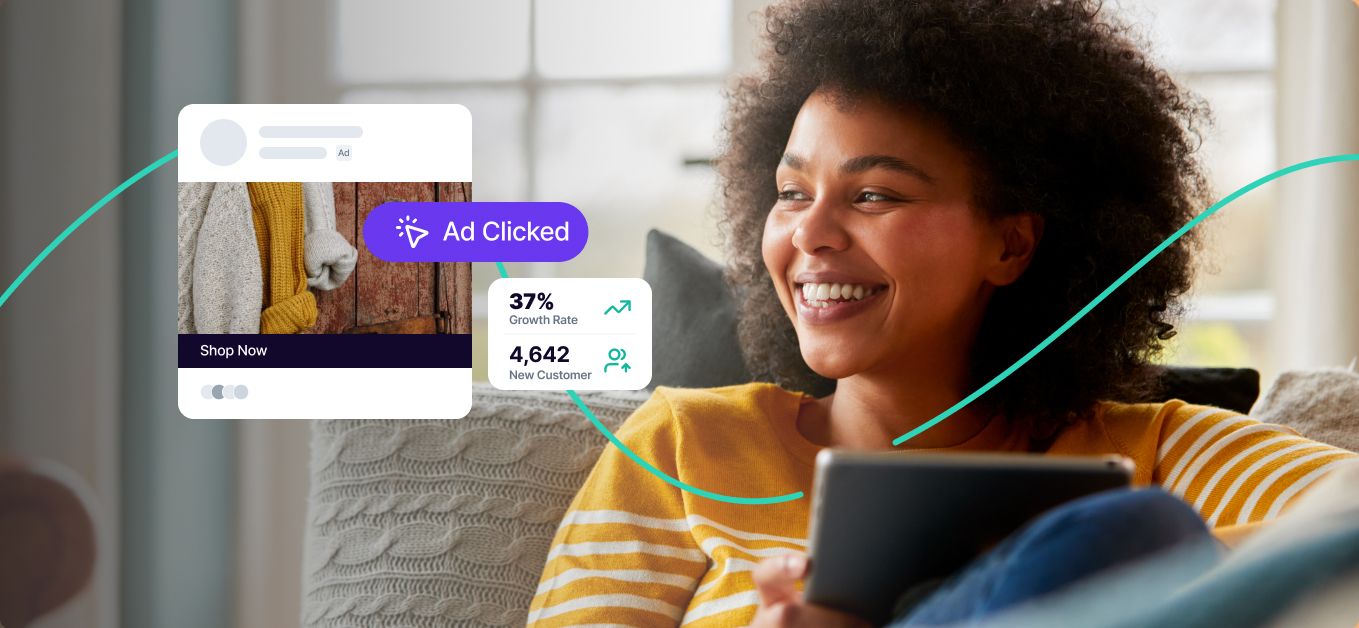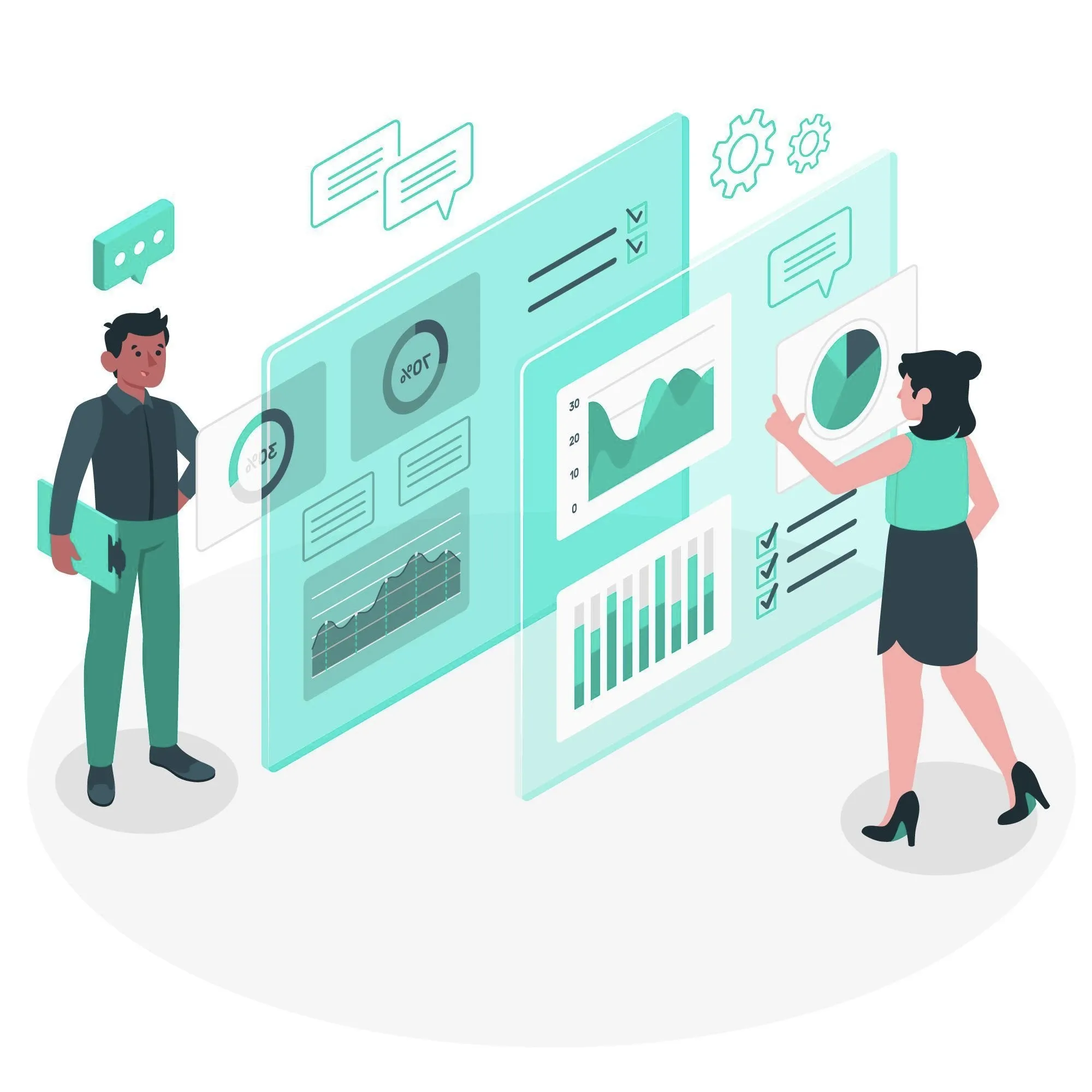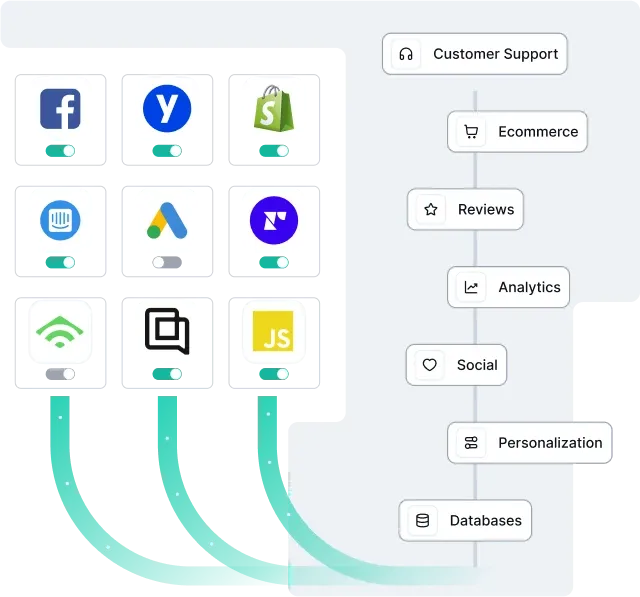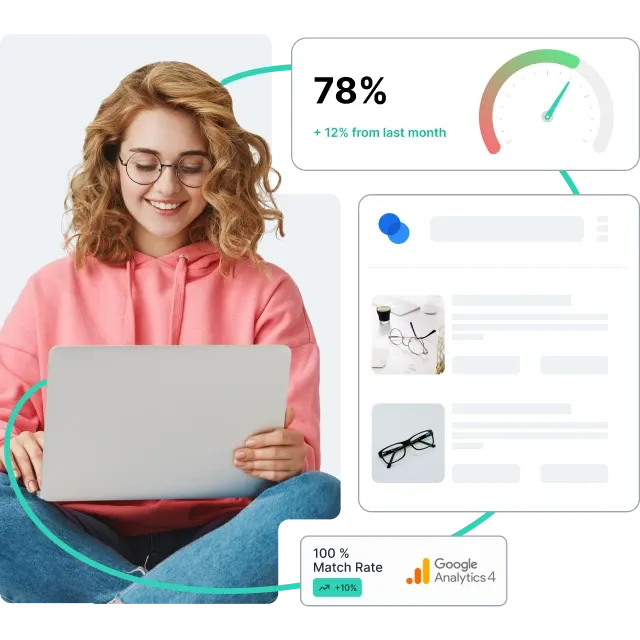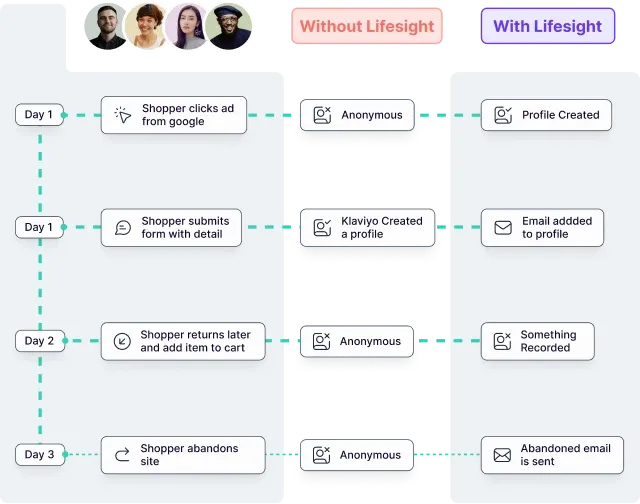A customer data platform, or CDP, is an increasingly important tool for businesses looking to deliver personalized customer experiences at scale. A CDP provides a single, unified view of each individual that powers targeted campaigns and interactions across channels by consolidating customer profiles and data from various sources.
If you’ve been considering implementing a CDP but aren’t sure where to begin, this post will give you a high-level overview of the key steps to get started. By the end, you’ll have a solid understanding of what’s involved in a solid groundwork for a CDP to improve your marketing efforts and customer relationships. Let’s dive into the foundational knowledge you need to make the most of this powerful technology.
The Rise of Customer Data Platforms (CDPs)
In the digital age, data has become the lifeblood of businesses, driving critical decisions and shaping customer experiences. As data sources multiply across CRMs, marketing automation platforms, analytics tools, and more, piecing together fragmented information on customers and prospects becomes an increasingly complex challenge. This data disunity leads to inaccurate reporting, poor personalization, and ineffective experiences that hamper growth.
To harness the promise of customer data, businesses need solutions that consolidate disparate sources into unified profiles and insights. Enter the customer data platform (CDP). CDPs ingest data from all channels and systems, resolve identities, and centralize information to form complete pictures of each customer.
With holistic records constructed in real-time, CDPs empower personalized messaging and experiences. They equip marketers to micro-target campaigns, tailor product recommendations, and optimize spend. Unified data unlocks unified customer understanding.
As privacy regulations evolve and third-party cookies decline, CDPs provide the customer intelligence needed to navigate the future. They future-proof data-driven marketing strategies and personalization. Implementing a robust customer data platform is a strategic imperative for brands seeking to optimize engagement, retention, and growth.
What is a Customer Data Platform (CDP)?
What is CDP
At its core, a customer data platform (CDP) is a centralized system that collects, organizes, and activates customer data from various touchpoints, creating a unified customer view. CDPs consolidate first, second, and third-party data to build detailed customer profiles that feed personalization, retention, and acquisition initiatives.
There are two primary CDP architecture types:
Packaged CDP: An all-in-one CDP that includes data collection, identity resolution, profile management, and activation. Packaged CDPs are pre-built turnkey solutions requiring less IT effort to implement. They provide an end-to-end data management workflow.
Composable CDP: A modular approach that combines best-of-breed components for data ingestion, identity linking, profile building, and more. Composable CDPs provide flexibility to pick customized elements. However, they require more integration work.
In both forms, CDPs create a persistent, continuously updated customer database. They seamlessly link behavioral, transactional, and observational data at an individual level in real-time. Powerful identity resolution connects data from anonymous sources to known individuals.
This holistic data foundation powers personalized messaging and experiences. CDPs activate unified profiles across channels through audience segmentation, campaign management, and integration with operational systems.
As privacy laws tighten and third-party cookies decline, CDPs will only grow in importance. Their ability to ethically centralize consented first-party data provides the customer intelligence needed for the future.
How does a CDP differ from other Data Systems?
CDP-differ-from-DataSystems
While there are multiple tools that manage customer data, CDPs stand out because of their real-time data unification and activation capabilities.
Compared to CRMs: CRMs like Salesforce focus on sales and service data. CDPs consolidate broader sets of behavioral, transactional, and engagement data across marketing, sales, service, and more. CRM data remains siloed while CDPs unify data enterprise-wide.
Compared to DMPs: DMPs (Data Management Platforms) manage anonymous audience data for targeting. CDPs create persistent, individual customer profiles. DMPs lack identity resolution to tie data to real people. CDPs enable known, personal engagement.
Compared to Tag Managers: Tag managers like Google Tag Manager deploy tracking scripts. But they don’t actually unify data at the customer level. CDPs build detailed individual records for messaging and personalization.
Compared to BI Tools: BI Tools report on structured data sets. CDPs integrate structured, unstructured, and time-series data. BI tools lack identity management and profile building in real-time. CDPs activate data.
Compared to Analytics Platforms: Analytics platforms enable collection, measurement, and reporting. But they don’t directly power customer engagement or personalization. CDPs activate insights.
The centralized, real-time customer records within CDPs uniquely empower personalized omnichannel experiences. No other marketing data system provides the same holistic capabilities in one solution.
Key features of an effective CDP
CDP – key feature
An effective customer data platform is defined by capabilities that enable real-time, unified profiles and cross-channel activation. Here are 7 key features to look for:
1) Real-time Data Integration
Robust CDPs ingest data continuously through APIs, ETL, and reverse ETL to update customer records in real-time. This enables sending timely, contextual messages that match present customer needs, not just past behaviors. Without real-time ingestion, profiles grow stale.
2) Unified Customer Profiles
CDPs seamlessly connect identities across channels to construct complete profiles. Collating data from CRM, web, mobile, in-store, and more provides a holistic view of each customer. This powers hyper-personalized messaging and experiences.
3) AI-Powered Analytics
Sophisticated CDPs apply machine learning algorithms to profile data to uncover predictive insights. Patterns like churn risk, lifetime value, and purchase propensity can be detected. This prescribes targeted engagement strategies for each individual. AI augments human analysis.
4) Cross-Channel Orchestration
CDPs coordinate unified profiles, segments, and messaging across channels for integrated journeys. They sequence tailored experiences across email, web, mobile apps, call centers, retail stores, and any customer touchpoints. Siloed channels become orchestrated.
5) Data Privacy and Compliance Tools
Maintaining customer trust is imperative. Robust CDPs ensure regulated data usage, consent management, and access controls. Data ethics matter more than ever. Leading CDPs enable compliance and responsible data handling.
6) Flexible Data Architecture
With configurable infrastructure, CDPs can accommodate varied data structures and use cases. Extensible APIs and turnkey connectors integrate easily with unique tech stacks. Pre-built connectors avoid custom coding.
7) Seamless Integration Capabilities
CDP insights must be actionable across technology ecosystems. Turnkey integrations reduce friction in embedding data, segments, and insights into operational systems. Smooth integrations allow for leveraging CDP intelligence enterprise-wide.
Beyond marketing, CDPs serve use cases like fraud prevention, customer self-service, sales intelligence, and more. Unified profiles enhance processes company-wide.
The most effective CDPs check all boxes as customer intelligence hub – from adaptable data infrastructure to actionable insights. They drive personalized experiences and strategic growth.
Benefits of using a Customer Data Platform
Customer Data Platform – Benefits
Implementing a robust customer data platform unlocks a multitude of benefits across marketing, sales, operations, and the entire customer lifecycle:
For Marketing:
- Deeper customer insights inform strategies and personalization
- More relevant and timely engagement opportunities
- Improved campaign performance through optimization
- Accurate measurement of marketing ROI
- Future-proofed targeting is not reliant on third-party data
For Sales:
- Enriched lead and contact profiles prompt smarter outreach
- Understanding of prospect behaviors and preferences
- Visibility into marketing-sourced leads for increased conversion
- Prioritized opportunities based on customer lifetime value
For Customer Service:
- Complete customer history for personalized service
- Predictive insights to get ahead of customer issues
- Automated self-service recommendations based on profiles
- Lower contact rates and improved satisfaction
For Operations:
- Centralized consent and preferences simplify privacy compliance
- Detected fraud early based on customer patterns
- Reduced IT burden through integrated data infrastructure
- Enterprise-wide data accessibility under proper controls
For the Customer Experience:
- Consistent messaging across all channels and touchpoints
- Relevant recommendations matching interests and habits
- Seamless experiences based on holistic firm understanding
- Proactive service by anticipating customer needs
The benefits of unified customer intelligence span the entire organization. CDPs drive growth and efficiency through data-driven engagement, measured marketing, and customer insights. The platform pays dividends across departments.
Overcoming modern marketing challenges with CDPs
Modern marketing challenges – CDPs
Modern marketers grapple with fragmented data, proliferating channels, privacy regulations, and more. Customer data platforms empower brands to turn these obstacles into opportunities.
1) Fragmented Data Sources
Marketing teams struggle to gain insights when customer data is fragmented across CRM, web analytics, email, and other platforms. Without a unified view, engagement efforts are not coordinated and experiences remain inconsistent. CDPs consolidate data enterprise-wide into complete, unified profiles with persistent record-keeping. This singular view of each customer finally overcomes stubborn data silos. For example, online and offline purchase data can be merged to understand omnichannel spending habits.
2) Rapidly Evolving Customer Behaviors
Considering how rapidly customer preferences and behaviors shift, legacy marketing systems with batch data updates simply cannot adapt in real-time. As a result, messaging fails to match the present interests of customers. Real-time CDPs continuously update profiles by ingesting data streams as behaviors change. This empowers sending timely, contextually relevant messages tailored to current needs, not just past behaviors. For instance, shifting product preferences can be detected and recommendations adapted quickly.
3) Regulatory Compliance and Data Privacy
Customers rightfully demand that their data be handled securely, transparently, and according to their preferences. Meanwhile, regulations like GDPR and CCPA impose requirements around ethical data handling. This makes compliance extremely complex. CDPs help by centralizing consent, rigorously tracking data lineage, and enabling data rights requests. Customer trust is strengthened on both fronts.
4) Multi-Channel Marketing Consistency
Delivering seamless omnichannel experiences is incredibly difficult with channel-specific data trapped in silos. CDPs overcome this by using unified profiles to coordinate consistent messaging and experiences across all touchpoints. They finally enable orchestrating tailored customer journeys spanning the digital and physical worlds. Abandoned online carts can trigger in-store offers, for example.
5) Personalization at Scale
Today’s consumers expect personalized content and recommendations tailored to their unique needs and interests. However, legacy rule-based segmentation cannot scale efficiently. CDPs apply unified profiles and machine learning to automatically segment millions of individuals for tailored omnichannel experiences.
6) Measurement and Attribution
Understanding marketing impact across multi-touch buyer journeys with many online and offline touchpoints is incredibly difficult. CDPs analyze full cross-channel data trails to finally uncover true conversion drivers across channels. This visibility optimizes marketing spend allocation towards high-ROI high-impact activities.
7) Adapting to Technological Changes
As new martech and data technologies emerge constantly, marketing stacks must rapidly evolve. But inflexible legacy systems buckle under the pressure to integrate new tools and data sources. With modular open architecture, CDPs smoothly onboard emerging technologies and data, future-proofing the marketing technology stack. For example, emerging data sources like IOT devices can be onboarded.
While marketers grapple with these modern realities, CDPs empower brands to transform challenges into advantages. Unified data provides the customer intelligence to deliver personalized experiences at scale, orchestrate cohesive journeys, strengthen trust, optimize spend, and adapt to a changing landscape.
The next steps in your CDP journey
Understanding the capabilities and benefits of customer data platforms is an important first step. But grasping the basics is just the beginning. As privacy regulations advance and data proliferate across channels, investing time in finding the right CDP becomes mission-critical for data-driven marketing success.
Selecting a future-ready CDP that evolves with your needs is paramount. Seek an open, flexible solution that centralizes consent, orchestrates insights across channels, and applies AI for actionability.
The transformation powered by unified customer data is profound. Marketers must explore their options to connect fragmented information and unlock new potential. Now is the time to spearhead the shift from channel-centric to customer-centric engagement.
Interested in exploring how a cutting-edge CDP can transform your business? Dive deeper with Lifesight’s Connect and discover firsthand the power of unifying data across your technology stack. Let real-time profile orchestration provide the foundation to engage, convert, and retain customers in new ways. The future of marketing begins with unified data, so Connect now.
You may also like
Essential resources for your success
